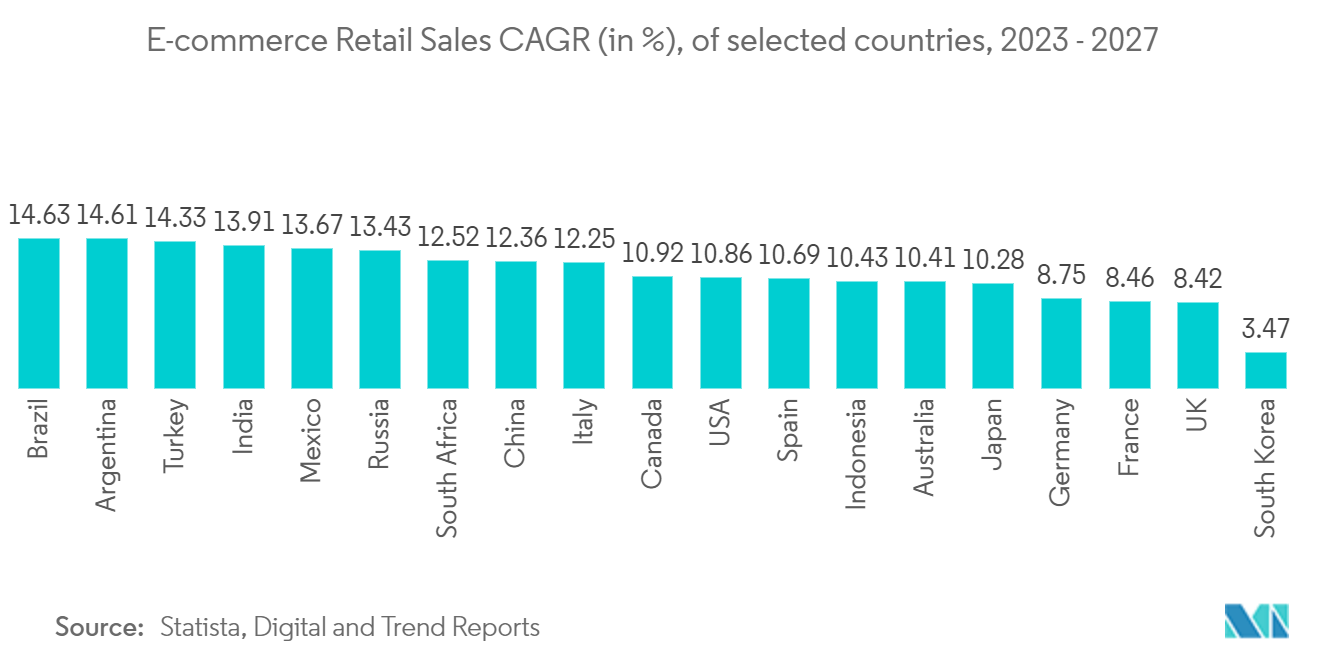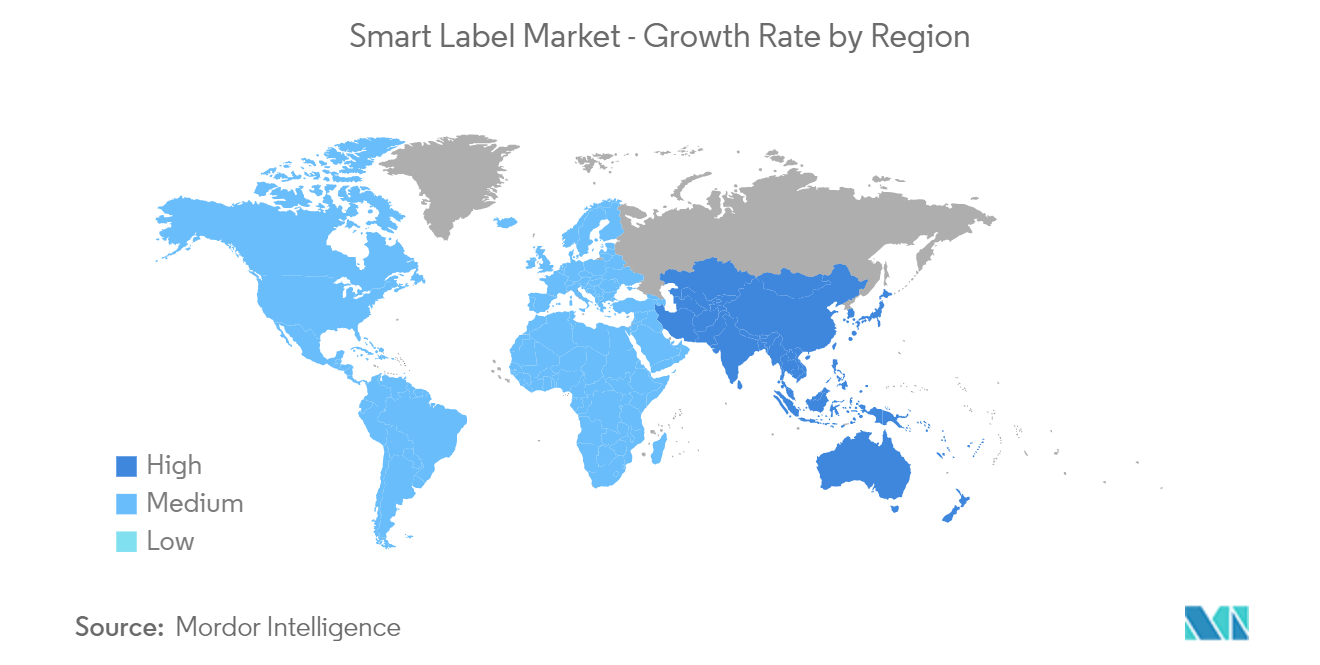Market Trends of Smart Label Industry
Retail End User Industry to Hold Significant Market Share
- In the retail industry, smart labels are becoming increasingly popular for tracking and identifying merchandise. RFID (radio-frequency identification) or other technologies are used in these labels to track products throughout the supply chain and in-store. Smart labels have the potential to assist merchants in managing inventories more efficiently by delivering real-time information on stock levels and locations. Merchants can easily update product information on labels and also enable more accurate pricing and marketing.
- Furthermore, by incorporating RFID technology into e-commerce, firms can avoid mistakes like the available stock not matching the actual one, which results in a loss of sales and customer confidence, problems with customer shipments, and issues with a stock that does not integrate online shopping with the actual store or warehouse, which results in more complex management.
- NFC (near field communication) labels can be utilized in a variety of ways in the retail business to improve the customer shopping experience and increase efficiency. One application for NFC labels is electronic shelf labeling systems (ESL). Retailers can change product pricing and information in real-time using a mobile device or PC with NFC technology embedded into these digital price tags. This saves time and resources while also lowering the chance of price errors.
- The players in the market are developing new solutions to cater to customers. For instance, in August 2022, Oli-Tec created a new smart label technology for temperature and time-sensitive products. The smart labels can be put on any product with a five to fifteen-day shelf life. They have an integrated visual indicator that is temperature and time-sensitive. It progressively changes from yellow to red, more slowly in cool and faster in hotter temperatures, both at known, repeatable rates. This simple color-changing indicator provides a clear, highly visible call to action that both retailers and consumers can understand at a glance," according to Oli-Tec.
- Overall, the future of the smart label market looks promising, with the potential to revolutionize the retail sector by offering real-time inventory tracking, improving customer engagement, and promoting sustainability. As retailers continue to adopt advanced technologies and seek innovative solutions to improve operational efficiency, the demand for smart label products may grow in the coming years.

North America to Hold Major Share in the Market
- North America is one of the largest markets for smart labels across the world, with the United States accounting for a significant share of the region. The country's huge demand can be attributed to the vast presence of retail stores, both small and large. Retail goliaths like Walmart and other businesses are in charge in the United States, driving the uptick in activity and significantly boosting the country's growth in the smart label market. Walmart has been putting electronic identification tags on men's clothing, like jeans, as the retailer tries to gain more control over its inventory.
- Food companies are using smart labels to connect with consumers by offering additional nutritional and ingredient information and helping to reduce food waste in the country. Also, the USDA and FDA (Food and Drug Administration) recently announced a framework agreement to label cell-based meats and potentially other food products. This is expected to augment the size of the market in the country. Moreover, vendors in the country invest in technologies that drive greater traceability throughout their supply chains, with blockchain being increasingly used along with smart labels.
- The United States is also witnessing increasing employee theft and shoplifting, including organized retail crime. To address the alarming rise in retail crimes, stakeholders are developing smart labels based on RFID to track textiles and garments.
- The effects of new advancements in digital technologies have influenced the Canadian printing industry, making it more competitive and encouraging firms to invest in this domain. The adoption of new technologies, such as digital printing, integrated systems, customer interface software, and post-process automation, has enhanced operating efficiency and significantly improved the quality of products delivered to end users.
- Food and Consumer Products of Canada (FCPC) launched an innovative smart label that gives consumers instant and easy access to information that cannot be printed on product labels. This is a part of the Healthy Eating Strategy that the members of FCPC have undertaken by ushering in higher levels of transparency in the products that they offer to consumers. Many major companies in Canada have also committed to using smart labels to enhance the culture of transparency.

